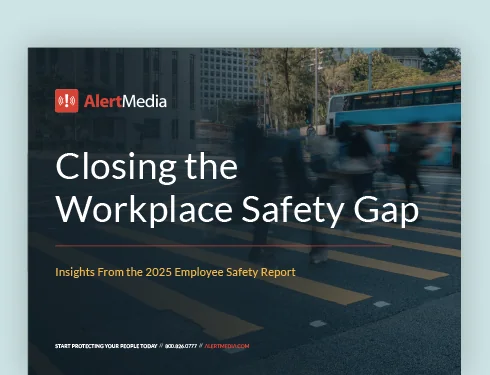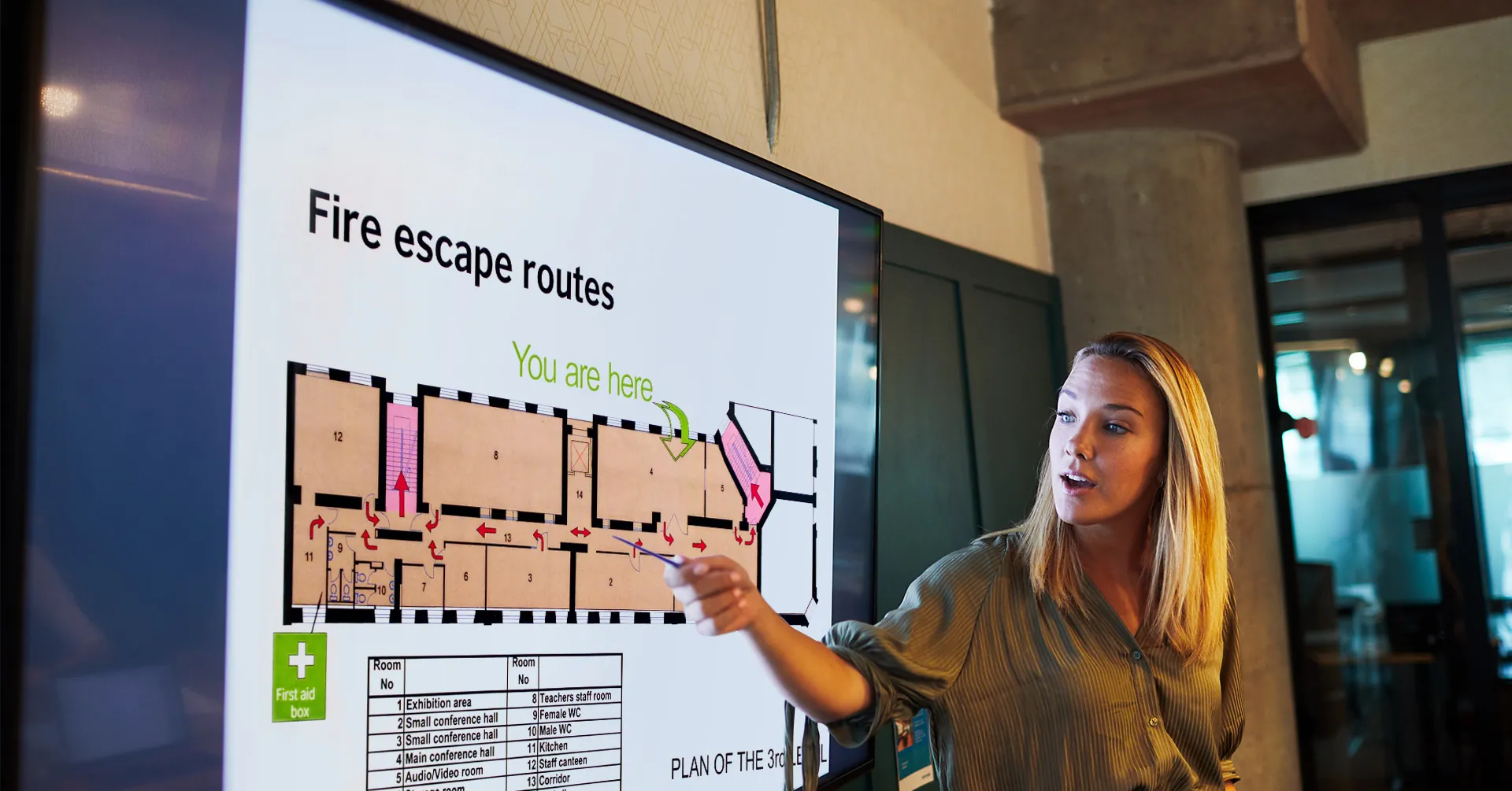
Lone Worker Risks: How to Protect Your People
From violent attacks and health risks to work-related injuries, there are numerous threats to employee safety. And those risks are only amplified when employees are working by themselves. As a result, lone worker safety is a top concern for organizations.

In January of 2014, a social worker in North Carolina began working with a male client. It became clear the client was resistant to her services—he was verbally aggressive on multiple occasions. For a home visit, she brought a peer with her as a safety measure. Despite this precaution, a confrontation occurred inside the client’s home, and he blocked the front door.
After a 15-minute ordeal, the social worker was able to maneuver her way out of the house. Unfortunately, the client lunged after her and shoved her off the front deck. Only later would she learn the extent of her injuries, both physical and emotional.
Stories like these are, sadly, all too common.
From violent attacks and health risks to environmental disasters and work-related injuries, the threats are numerous and can take many forms. And those risks are only amplified when employees are working by themselves. As a result, lone worker safety is a top concern for organizations.
Who Exactly Are Lone Workers?
Defined as anyone working in isolation without direct supervision, lone workers typically perform their jobs outside of normal business hours, away from a fixed office, and separated from the larger workforce. They can be found across industries: home health care, social work, real estate, oil & gas, manufacturing, and transportation.
And they can have a variety of titles:
- Social Worker
- Property Manager/Real Estate Agent
- Home Health Care Worker
- Service/Maintenance Tech
- Driver (shipping/transportation)
All of these positions share one attribute in common: They are, by nature, solitary roles. As a result, these workers encounter a number of unique threats.
The Risks Lone Workers Face
Assessing lone worker risk is the first step every organization should take to protect its people. Understanding the inherent dangers that working alone can present will give management a starting place for ultimately safeguarding their people and maintaining business continuity.
Common risks to lone workers that lead to injuries and fatalities include:
Violent assault: An attack can happen with little warning. Some emergency communication providers offer lone worker safety devices that allow for a direct connection to law enforcement.
Health crises: Whether it’s an undiagnosed heart condition, a frightening seizure, mental health/stress-induced issues, or some sudden medical crisis, lone workers are at increased risk when a health-related incident occurs.
Workplace accidents: From falls and crashes/collisions to inhaling toxic fumes and cuts or lacerations, there are a variety of workplace hazards that can pose a significant risk to workers—especially when coworkers aren’t nearby to help.
Equipment malfunction: Faulty equipment that hasn’t been properly tested can result in dangerous working conditions. This also includes vehicular issues that could leave workers stranded in a remote location.
Understanding the risks ahead of time will help management tailor their safety policy so that it’s relevant to the specific hazards employees might encounter.
Evaluating Potential Risks
Performing regular risk assessment is an effective way to maintain a consistently safe working environment wherever your lone workers travel and whatever the job demands.
Identifying and evaluating existing hazards allows management to mitigate those threats and determine what types of administrative controls are needed. These assessments should take into consideration a variety of factors including:
- If lone workers are monitored and properly supervised
- If the task can be handled alone or if it requires a work companion for safety
- If your organization has adopted a reliable lone worker safety solution
- What training measures have been implemented
- If dangerous materials will be involved
- The mental/emotional state of the lone workers and their medical condition
- If there will be a risk of attack, violence, aggression, or confrontation
- How management plans to (or already has) trained its people on using the communications system/safety tool
With all of the inherent risks present, it’s no surprise that roughly 45% of social workers in the United States reported that they experienced personal safety issues during their work. When it comes to protecting lone workers, the more information an organization has, the better equipped they’ll be to protect their people.
It’s recommended that management conduct annual (or even quarterly) assessments in order to maintain a current record of the risks their people face.

Build a Lone Worker Safety Program
Once an organization has fully established the potential risks, it’s time to put that knowledge into action. Crafting a comprehensive safety program is the next step in protecting your lone workers.
Developing a thorough lone worker safety program is a proactive step every business should take in preparing its people for unexpected emergencies while on the job.
Here’s a breakdown of key actions that will help structure your program:
Assess risks: As discussed, fully understanding the dangers your people face is crucial to providing them with the tools necessary to keep them safe.
Outline program: Once you’ve established the risks, it’s time to craft a program that clearly articulates your company’s emergency protocol.
Invest in communication tools: Some emergency communication providers, such as AlertMedia, offer an employee safety monitoring solution that equips workers with a visible and audible deterrent and direct connection to law enforcement.
Educate your people: After identifying potential lone worker hazards and building out your plan, you need to determine who is most at risk and properly train them on emergency procedures.
Organizations can’t be expected to intuitively know how to build out a comprehensive program. Check out AlertMedia’s guide to creating a lone worker safety program that management can turn to for guidance.
Once you’ve designed your program, it’s important to check in with your people to ensure it’s working for them. If they feel their employer is going the extra mile to ensure their safety, lone workers will feel less stressed and be less inclined to seek new employment.
Fulfill Your Organization’s Duty of Care

Shielding your people from unnecessary risk has multiple benefits across your entire organization. The more your workers feel protected, the better they’ll perform on the job. Studies have shown that organizations committed to a culture of safety see lower staff turnover and a boost in morale.
Unfortunately, violent encounters do happen.
Consider the social worker’s story we’ve been discussing: Due to her injuries and subsequent PTSD as a result of the trauma she endured, she ended up having to switch careers.
An employer’s duty of care to their employees is a legal and moral responsibility. In addition, investing in your lone worker’s peace of mind sends a clear message: workplace safety is a top priority for your organization.
Adopting a Lone Worker Safety Device
While there are numerous risks lone workers face, there are precautions organizations can take to ensure their people’s safety.
Management should look for a lone worker safety tool that meets the following criteria:
Zero-button solution: Lone workers don’t always have access to their phones. They’ll need a hands-free safety tool that enables them to directly alert law enforcement from a locked phone.
24/7 monitoring solution: Some emergency communication solutions provide a monitoring team that watches for distress signals, ready to help keep your people safe and protected.
Rapid connection to law enforcement: When lone workers are conducting their work in isolation, employers need a way to ensure their people have direct access to authorities—and that authorities have informed data on those workers.
Audible deterrent: If a timed session expires, an audible deterrent triggers an alarm that both startles an aggressor and alerts law enforcement. Again, deterring an aggressor before an attack should be the goal for any lone worker.
Identify risks, build a safety program, and help your people avoid a dangerous situation. Having a safety tool in place as both a deterrent and last resort helps provide lone workers with the confidence they need to perform their jobs.
AlertMedia, the leader in emergency communication software, offers a proprietary lone worker solution—a hands-free safety tool that gives lone workers and employers peace of mind that everyone is kept safe, informed, and connected.




